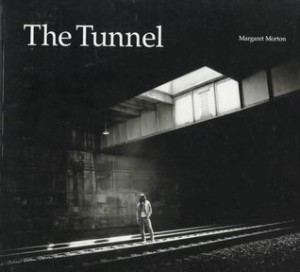
Monthly Archives: January 2016
Summary 2- Tapestry of Space: Domestic Architecture and Underground Communities in Margaret Morton’s Photography of a Forgotten New York
Irina Nersessova’s article Tapestry of Space: Domestic Architecture and Underground Communities in Margaret Morton’s Photography of a Forgotten New York discusses the behavioral and psychological impact that urban life, photography, and architecture brings to humans living in urban New York at the time. The article also sheds light of the term “spectacle” which Morton uses to comment on society’s reliance on consumption through image promotion (Nersessova). This term helps describe why humans are subject to wanting the material things that they often see around them and are familiar with. Images influence people into having commodities in which they feel they need. Morton’s main premise of her argument was how space and the environment is a commodity given off through New York photography and she wanted to explore the New York that exists beyond the spectacle and discover the places that exist within the city that is not often displayed and adored as the famous New York City.
Nersessova uses the term d`erive (also referred to as the “drift”) as a technique for exploring spaces and to understand the environments psychological impact. This term is most commonly used to represent the casual wander in a space or environment and the psychological mood and effect it has on the mind in that specific space. She tells us a story of a man named Bernard who lives in New York and feels that aboveground life in the city is too distracting from the individual self. The aboveground lifestyle is all that photographers seem to capture in New York along with excessive human interaction. The underground life is not dedicated to images or accumulating commodities, so Bernard uses this space to achieve the level of consciousness he believes is necessary (Nersessova). While he was secluded and moved out of the public eye, he notices that his new life in the tunnels of New York brings him more security and a place to find himself. Nersessova brings in this example from Morton’s book into her article to help portray exactly how the atmosphere of a place and the environment can bring psychological change in the way one feels.


Nersessova also adds that the atmosphere of a place contributes to the business of tourism and consumerism. Seeing photographs of urban architecture is what attracts tourism to that specific place. The environment and energy emitted from places and photographs effects emotion and behavior which Morton describes in her study of space.
Later throughout the article Nersessova pulls aspects of domestic architecture. Domestic architecture refers to the homeless population’s construction of home environments (Nersessova). She describes that the difference between real homelessness and the rest of the population is the inventive nature of endurance they show to us and level of reality they are faced with. As we read throughout the end of this article we notice Nersessova provides evidence of the way she classifies the true state of homelessness and whether or not domestic architecture negates the definition of a necessity and an accessory. As the article comes to a conclusion we have a more in depth understanding of the personal meaning of architecture and how everyone creates their own individual space for their own survival.
NERSESSOVA, IRINA. “Tapestry Of Space: Domestic Architecture And Underground Communities In Margaret Morton’s Photography Of A Forgotten New York.” Disclosure 23 (2014): 26. Advanced Placement Source. Web. 20 Nov. 2015.
Reading Summary 1- Architectural Exclusion: Discrimination and Segregation Through Physical Design of the Built Environment
Throughout the article of “Architectural Exclusion: Discrimination and Segregation Through Physical Design of the Built Environment” written by Sarah Schindler, we learn that discrimination and racial divide between different races and people of various social sects is existent not only through laws and regulations that inhibit people from entering into select neighborhoods and communities, but also through the built environment emitted from architectural buildings and structures.
This article describes the different ways in which the architecture of a place causes a sense of exclusion in the surrounding environment. We do not often notice this but the vibes that are given off when in a building or specific location effect the social and environmental disposition of feelings through people which ultimately determine whether or not they feel welcome to remain in that area, or if they feel some type of barrier in which they are not wanted or included.
Throughout the article we are introduced to Robert Moses who is known as the “Master Builder” of New York. Moses is known for constructing designs of overpasses that are built intentionally low so that buses cannot pass underneath them.

This structural design is a great example of how architecture can inhibit certain kinds of people into areas in which they are not wanted. Building the overpasses intentionally low inhibited buses from traveling to and from parts of the city underneath the overpasses so that poor people and people of color could not access these parts of town due to the fact that individuals who come from a lower class of living most often rely on public transportation as a means to get from place to place.
As understood from the article, exclusionary built environment or architectural regulation is much more powerful than factual laws set in place in part because it is unseen. A lot of the times architectural regulation is not often noticed by the public eye and for that reason it is hard for people to accuse lawmakers of this form of divide as opposed to an actual law dividing individuals from certain areas. The article also discusses how highways divide neighborhoods which also contribute to limiting the integration of neighborhoods that come from different backgrounds and people from different social classes. The term choice architecture was also discussed in the article. Richard Thaler and Cass Sunstein are choice architects who control and create the context in which a decision is made and help support the fact that there is no such thing as ‘neutral design’. While most people think that structures and buildings are placed where they are for efficiency purposes, they are actually placed and divide areas in the context of class and race.
This article overall gives the most importance to the fact that this form of regulation is hard for lawmakers to consider identifiable to courts, legislators, and potential plaintiffs. With many examples given of physical structural barriers throughout the article, exclusionary architecture is definitely prevalent and is the back bone and basis of most all architectural endeavors.
Schindler, Sarah. “Architectural Exclusion: Discrimination and Segregation Through Physical Design of the Built Environment.” Yale Law Journal. 124.6 (2015): 1934-2024..Web. 25 Jan. 2016.
How to be a Successful Online Student
In order to be a successful online student you should most importantly always check the site several times a day to make sure that you are staying on top of all the assignments you need to do and to also know what is coming up next in the classes ahead. You should also have an organized working space and a reliable source of technology in order for you to complete the online tasks that is required of you. To being successful, you must have a planner or journal in which you can write down assignment due dates and keep track of all the things you need to turn in for the coming week.
Zotero Account
Here is the link to my Zotero Account!
https://www.zotero.org/sjohn7
Hello world!
Welcome to your brand new blog at sites@gsu.edu!
To get started, edit or delete this post and check out all the other options available to you.
For assistance, visit the comprehensive support site, check out the Edublogs User Guide guide or stop by The Edublogs Forums to chat with other edubloggers.
For personal support, you can attend Georgia State’s training on Edublogs or stop by The Exchange for one-on-one support.
You can also reference the free publication, The Edublogger, which is jammed with helpful tips, ideas and more.
Reading Summary One
Great summary of the thing. Evidence, evidence.